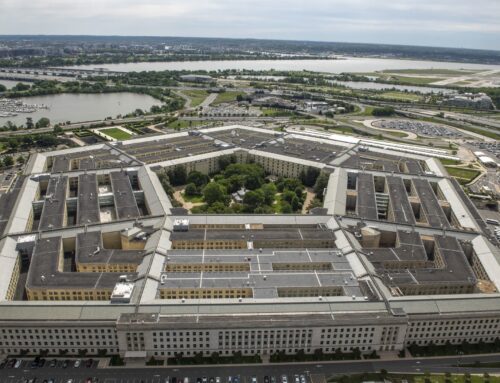This article was originally published in Newsweek.
You have to be a real optimist to think that we can keep thousands of nuclear weapons in fallible human hands indefinitely and nothing terrible will happen. Something terrible will happen—and it could mean the end of human civilization.
The risks are growing. Today, nine nations hold over 12,000 nuclear weapons, each many times more powerful than those used on Japan. The United States and Russia have most of them—about 90 percent of the global total—but China may be trying to catch up.
The fear that China might increase its nuclear arsenal from some 500 to 1,000 weapons has fueled calls for America to abandon all arms control limits and vastly increase its stockpile of some 5,000 weapons. In fact, massive new programs to build a new generation of nuclear-armed bombers, submarines and missiles were well under way before China began its build up—and may well have triggered China’s move.
The cost of this new nuclear arms race is high. A new report shows that global spending on nuclear weapons jumped last year—and that the United States accounted for 80 percent of that increase.
The global costs and the U.S. share will grow. This year, U.S. spending climbed again to more than $70 billion. The Congressional Budget Office estimates that the government will spend over $750 billion on nuclear weapons over the next 10 years. The total modernization cost will likely be over $2 trillion. Add in the $30 billion a year spent on programs to try to intercept ballistic missiles and the cost goes from unimaginable to unaffordable.
It gets worse. The Air Force just disclosed that the price of its new intercontinental ballistic missile (ICBM) has jumped 37 percent. Originally, the Air Force claimed that replacing the existing force of 400 Minuteman III missiles would cost only $62 billion. That rose to $95 billion, then to more than $125 billion (plus tens of billions more for the nuclear warheads).
In a new report, the watchdog group, Taxpayers for Common Sense, warns that the price tag could hit $315 billion.
For a family, a cost increase of 37 percent on a house or car they want to buy would certainly change their minds. Even for the Pentagon, this hike was “a critical breach” of cost projections, triggering a rare report to Congress.
This is likely why defense contractors are working furiously with their Congressional supporters to defend the program, supplying members with talking points and briefings, in addition to the generous contributions that flow into their campaign coffers. Members in the few states that have nuclear bases also do not want to lose the considerable economic benefits they provide.
Thus, Sen. Deb Fischer, a Republican from Nebraska, home to the Strategic Command, pleads in her recent piece for Newsweek, to continue the programs no matter what the cost. She argues that “Our ground-based intercontinental ballistic missiles (ICBMs) are indispensable. …by virtue of their location in our heartland, [they] are also unlikely to be targeted by enemy attacks.”
That would be a surprise to military planners who often describe ICBMs as a “nuclear sponge” that would soak up hundreds of Russian warheads as they tried to destroy the missiles before they could launch. This would complicate an adversary’s planning so severely that it would discourage any attack, the theory goes.
People living in Montana, North Dakota, Wyoming and Colorado may not think of their homes as “nuclear sponges” but that is one of the primary justifications for ICBMs today. Formerly valued as being more accurate and faster to launch than missiles from submarines, that is no longer the case. As the Taxpayers report notes. “Both ballistic missile submarines and nuclear-armed aircraft carry more accurate and powerful nuclear weapons than they used to,” allowing them to destroy even the most hardened target. Meanwhile, “the survivability of U.S. ICBMs has steadily declined as U.S. adversaries have developed more powerful and accurate nuclear weapons.”
Submarines are undetectable and bombers can be scrambled. ICBMs are sitting ducks that must be launched on warning of an enemy attack, stressing their human controllers to decide within minutes whether to launch Armageddon. Former Secretary of Defense William Perry says we must eliminate these relics of the Cold War, calling them, “some of the most dangerous weapons in the world. They could even trigger an accidental nuclear war.”
There have been dozens of close calls in the nuclear age, most caused by the need to launch these hulking missiles so quickly. Rep. John Garamendi (D-CA), Don Beyer (D-VA) and Sen. Ed Markey (D-MA) will hold a public hearing July 24 to examine the troubled missile program and “raise the alarm about our unsustainable, reckless nuclear posture.”
“We must confront the challenges before us, not by building ever more dangerous weapons,” says Garamendi, “but by placing the same priority on effective arms control and risk reduction measures that we currently place on modernization.”
This hearing may be our last, best chance to evaluate the risks of putting more nuclear weapons on hair-trigger alert before it is too late.
Joe Cirincione is the author or editor of seven books and over a thousand articles on nuclear policy and national security.
The views expressed in this article are the writer’s own.
- Canva Premium







Get Social